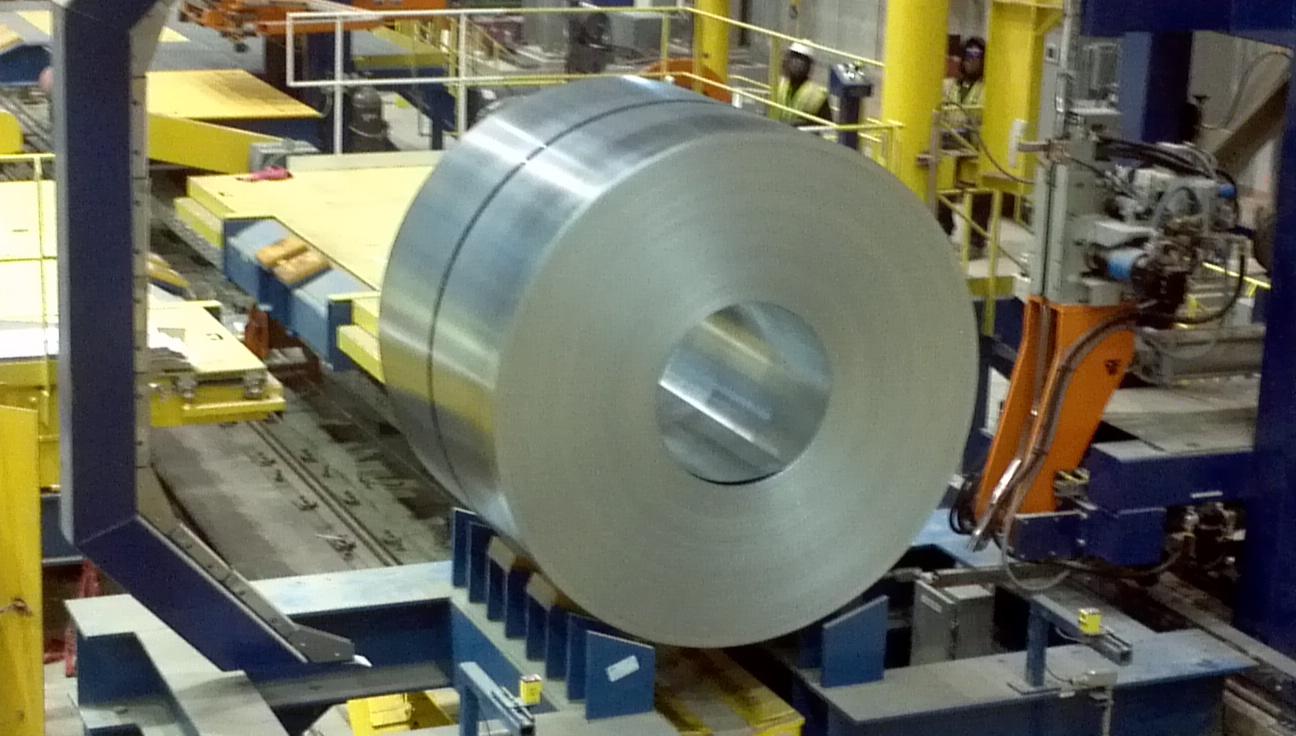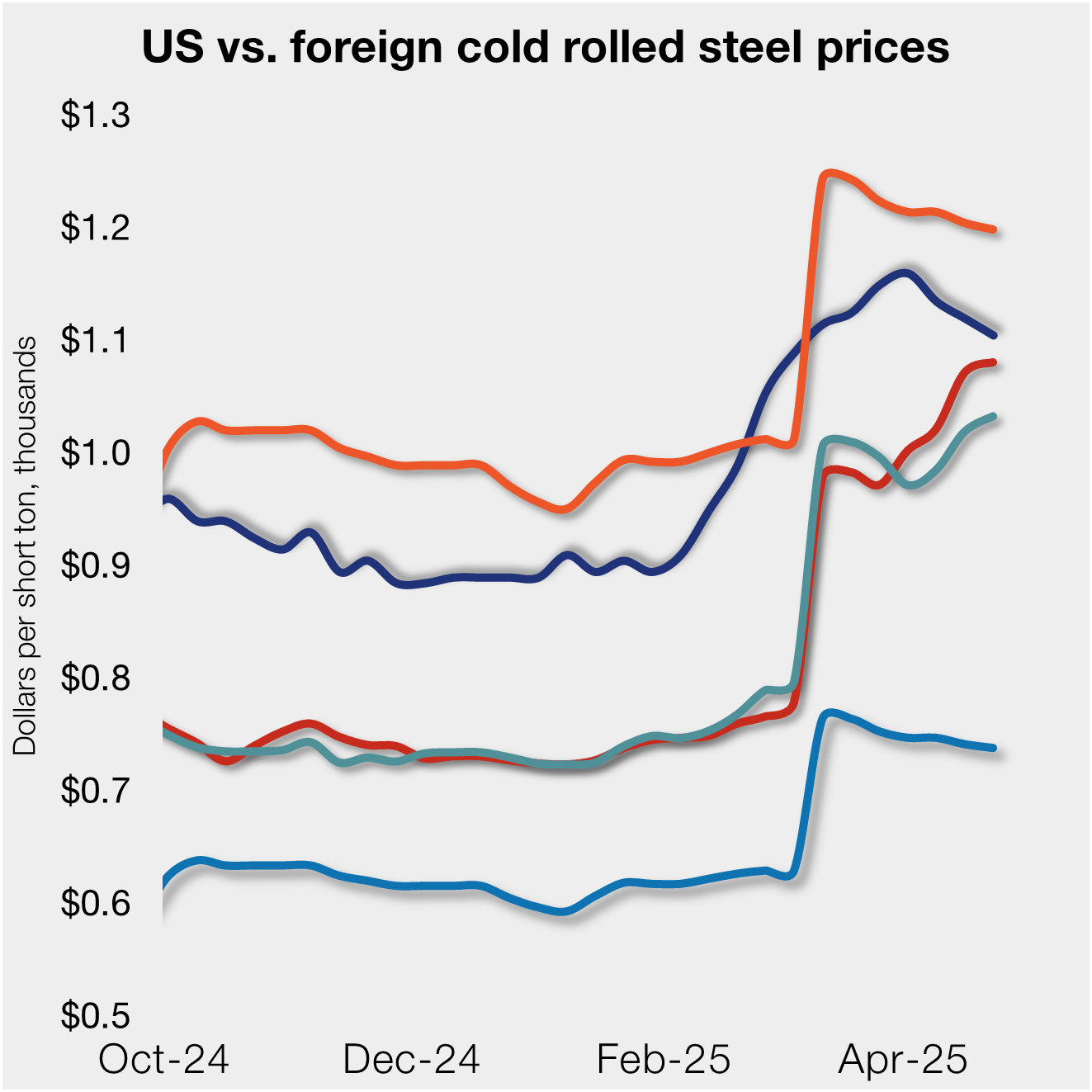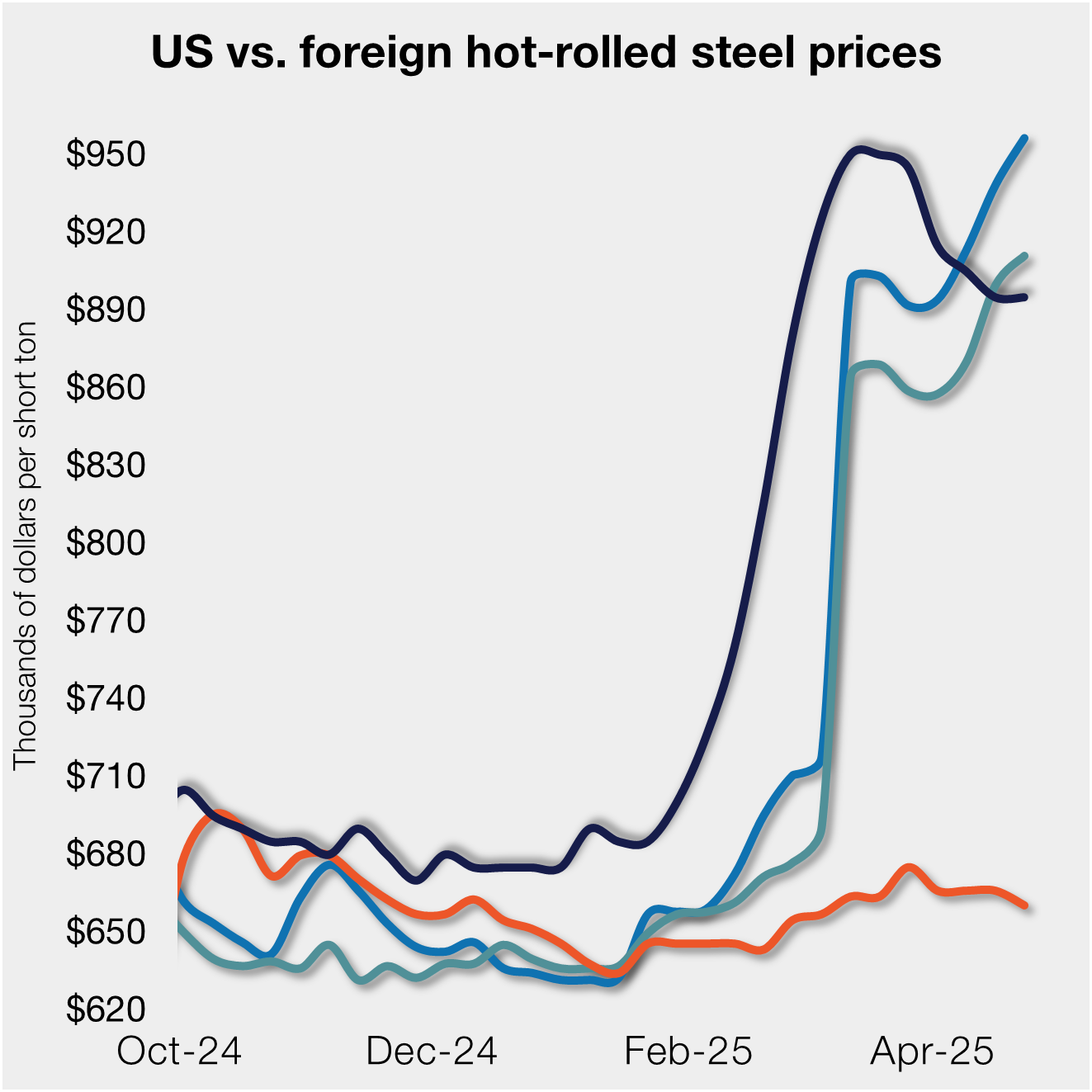Steel Products

Steel Buyers Basics: What is "Spread" & How is it Measured?
Written by John Packard
August 19, 2013
You will hear the term “spread” quite often when discussing the differences between flat rolled steel prices from one source to another. The term can be used when discussing domestic steel mills and their differences in pricing on the same product. It can also be used when discussing the differences between foreign steel imports and domestic steel prices.
However, we see the term overused or misused by analysts and members of the financial community as well as by some in the steel industry–especially regarding the spread between foreign prices and those of the domestic steel mills.
Domestic Market vs. International Prices
Every country has their own unique domestic market prices. The domestic price is that at which steel is sold within the country to manufacturers or distributors. The one area of the world that everyone likes to focus on is China since they both produce and consume more than 50 percent of the world’s steel.
According to World Steel Dynamics (WSD), the mainland China domestic market price for benchmark hot rolled coil is $497 per metric ton ($451 per net ton). At the same time the world export market price is reported by WSD to be $566 per metric ton ($513 per net ton). Both numbers are a far cry from the $635-$665 per ton range reported by SMU this past week ($650 average).
There are a couple of things to consider before taking the numbers presented above to your purchasing agents and asking why they aren’t doing a better job for your company.
First, China is not allowed to send hot rolled coil to the United States due to past dumping cases.
Second, the world export price is “FOB Port of Export” and freight, insurance, handling and margin for the trading company handing the transaction is not included in that price. So, $513 per net ton quickly can become $570-$610 per ton for basic commercial quality hot rolled once the trader’s costs are included.
SMU spoke with one of the trading companies this afternoon about the cost of freight, insurance and handling and we were told prices from the Far East to the West Coast or Gulf ports costs approximately $65 per ton. The same price was put on freight from Europe to the East Coast or Gulf ports.
There is also the traders’ margin, which generally is 2-4 percent of the total cost of the product. This means if a trading company buys $513 HR and adds $65 in costs to the product that equals $578 per ton. On top of this, the trading company will add $12-$23 per ton in margin bringing the total selling price to $591-$601 per ton.
Another factor which plays a major part in the discussion of price is inland (USA) freight–freight from the USA port to the end customer. If the customer is located in Philadelphia and buys hot rolled steel, then freight from the port may not be a deterrent to doing business. However, in the hinterland, where most manufacturing companies can be found, the freight from the port could well exceed domestic freight out of a producing steel mill by $20-$50 per ton or more.
This means $590 per ton the port can quickly become $610-$630 per ton to the end customer and the true spread between domestic and foreign shrinks due to the advantage the domestic mill has over the trading company coming out of a port.
To be accurate, you need to compare prices delivered to the customer’s facility and not FOB mill or the port of entry.
The combination of inland freight costs between the port and the customer and the lead times needed from the date of the original order to final delivery from the producing mill/trading company can many times be the difference between doing business or not doing business.
The ultimate spread – the difference between the landed cost of the steel in question to the end customer from the domestic mills and the foreign mills – has to be a fairly high level before buyers will risk their domestic relationships. In the past when price variations rarely exceeded $40 per ton from quarter to quarter the normal acceptable difference in pricing between foreign and domestic was $60 per ton. With price volatility potentially exceeding $100 per ton from quarter to quarter, the amount of risk taken by buyers is higher and ,the spread moves up to $100 per ton and, in some cases, even more before U.S. buyers can justify the price risk associated with buying foreign steel.
As we sit here in the middle of August 2013, we understand offers for hot rolled are most competitive out of Italy and Russia. Pricing is being referenced as being in the $570-$600 per ton CIF, Duty Paid east coast or Gulf ports (including trading company margin). If correct, the spread is somewhere around $65 per ton up to as much as $100 per ton before taking into consideration inland freight.
Spot prices in Europe have been reported by WSD as being $600 per metric ton ($544 per net ton). If you do the math their selling price to the U.S. should be $544 + $65 + $12 = $621 per ton. The spread is not wide enough to make sense to USA buyers unless the domestic mill has a tremendous freight disadvantage versus his foreign counterpart.
Numbers such as world export prices mean little when conducting actual business with buying customers. Trading companies are wise enough to realize where U.S. selling prices are at any point in time. They understand where they need to be regarding the spread between U.S. and international steel pricing. So, you will rarely see a low-ball number get offered into the U.S. market unless it is either a new player or desperate foreign mill needing to move product. (A good comparison might be a U.S. mill giving bigger discounts in order to fill their books).

John Packard
Read more from John PackardLatest in Steel Products

US rig count up, Canada declines
Oil and gas drilling activity was mixed this week, according to Baker Hughes. US rig counts expanded for a second straight week, while Canadian activity continued its seasonal slowdown of eight consecutive weeks.

US, offshore CRC prices continue to diverge
US cold-rolled (CR) coil prices declined again this week, slipping for a third straight week. Most offshore markets did the opposite, moving higher this week.

S232 lifts EU HR price over US, Asian HR still well behind
Domestic hot-rolled coil prices were flat this week after dropping for four straight weeks. Most offshore markets bucked the trend and gained ground.

SMU Steel Demand Index dips into contraction
SMU’s Steel Demand Index has moved into contraction, according to late April indicators. The slowdown comes in response to growing tariff uncertainty after the index reached a four-year high in late February.

Nucor selects Fives Group for new galv line at CSI
Nucor Corp. has tapped Fives Group as its partner in designing and manufacturing the new continuous galvanizing line being added at its California Steel Industries (CSI) joint venture in Fontana, Calif.
